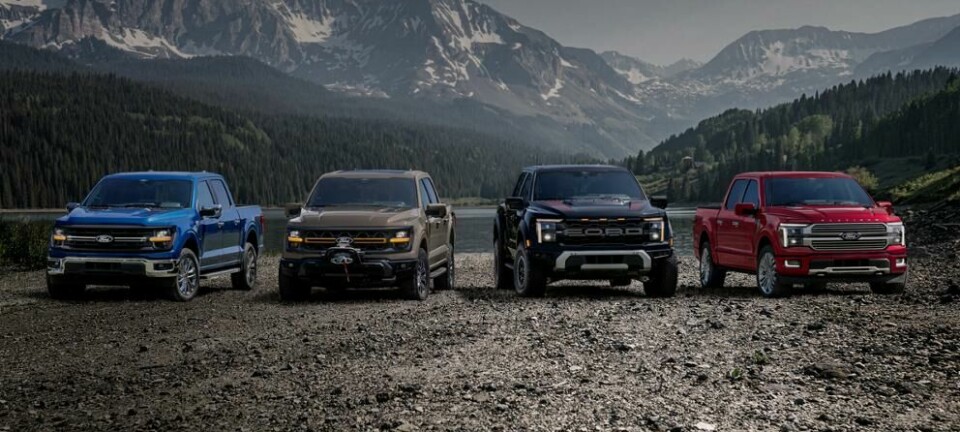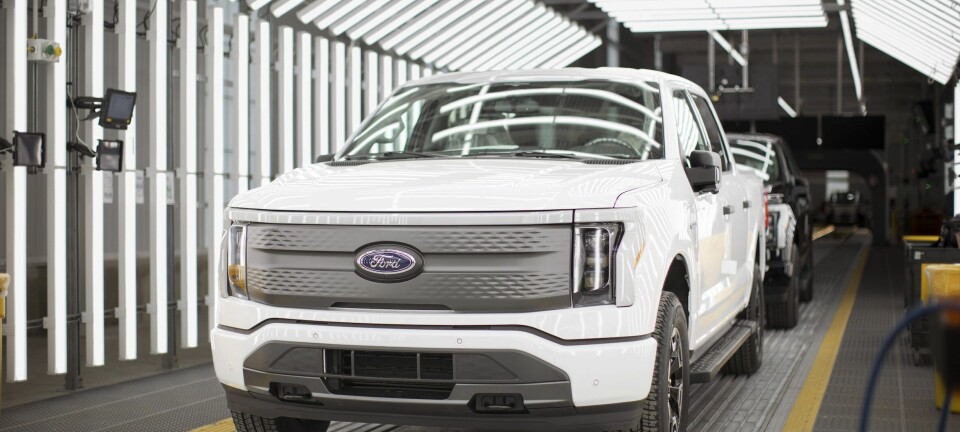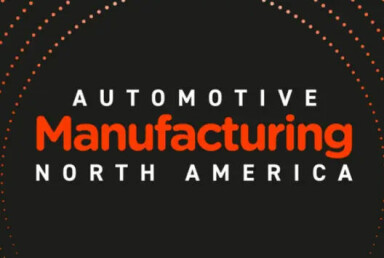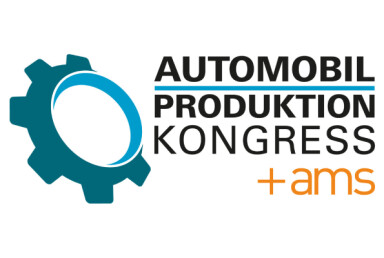Analysis: Production Pivots
Global vehicle production faces sharpest decline in 5 years

Tariff exposure crushes margins, aluminium shortages halt F-150 lines, and BEV strategies unravel. Industry faces steepest production decline in five years as 78 million unit forecast reveals manufacturers misjudged policy, supply and demand dynamics.
The data paints an uneasy picture. According to Automotive World's October 2025 forecast, global light vehicle production is expected to contract by 1.6% to approximately 78 million units this year. Europe faces a 2.4% decline, whilst North America confronts a steeper 5.2% drop. For an industry accustomed to growth, even modest growth, this represents a significant ‘recalibration’.
More troubling still, is the convergence of factors behind these figures. Faltering electric vehicle (EV) demand, tariffs, and supply chain fragilities have arrived simultaneously, creating what S&P Global Mobility describes as a "virtual gridlock" in medium and long-term production planning.
Speaking at the Automotive Manufacturing North America (AMNA) event this October, Eric Anderson, Associate Director for Light Vehicle Powertrain Forecasting at S&P Global, quantified the dramatic shift in planning cycles: "A year ago, we averaged 30 - 40 programme changes per month. Now we are seeing double or triple that amount, as OEMs rebalance near-term and long-term portfolios."

The immediate cause is policy uncertainty, particularly from Washington, and the manufacturing vacillation this brings. Since February 2025, a 25% tariff on automotive imports from Canada and Mexico, alongside escalating charges on Chinese goods, has fundamentally altered the economics of North American production. Ford expects tariffs to cost $1 billion this year, revised down from earlier estimates of $1.5 billion, while Stellantis projects losses of €1.5 billion ($1.75 billion) from tariff exposure alone, contributing to a first-half net loss of €2.3 billion ($2.7 billion).
These are not merely financial abstractions. Stellantis temporarily idled its Windsor Assembly Plant in Ontario for two weeks, and suspended operations at its Toluca facility in Mexico for an entire month, impacting 5,400 workers. The carmaker also slashed North American shipments by 23% in the first half. Infiniti indefinitely paused production of two SUV models at its Aguascalientes plant, while Jaguar Land Rover halted all US shipments for an entire month.
Despite recent localisation efforts, the theoretical benefits of encouraging domestic manufacturing remain - largely theoretical. Only General Motors, Ford and Stellantis possess excess US capacity to increase production meaningfully, and even they cannot pivot quickly enough to offset the disruption.
Anderson acknowledged the limited immediate impact: "Some OEMs, particularly Asian firms with existing capacity, have already shifted volume more quickly. Longer-term investments are more complex. Multi-billion-dollar plant decisions depend on clarity over agreements such as USMCA, which will be revisited next year."
Automotive supply chains under strain
The pandemic exposed the brittleness of automotive supply networks - that is, the categorical absence of flexibility. The lesson appears to have been imperfectly learnt. On 16 September 2025, a fire at Novelis Inc.'s aluminium plant in Oswego, New York demonstrated how quickly concentrated supply can unravel. The facility provided roughly 40% of aluminium sheet used by the entire US automotive industry. Its hot mill operations will remain offline until the first quarter of 2026.
For Ford, the largest customer of Novelis' Oswego plant, the consequences are severe. Chief Financial Officer Sherry House commented on the OEM projecting a hit of between $1.5 billion and $2 billion to adjusted earnings before interest and taxes, with production of between 90,000 and 100,000 F-Series trucks lost in the fourth quarter alone.
The F-150, America's bestselling vehicle, switched to an aluminium-intensive body in 2015 to improve fuel efficiency. That strategic decision now exposes the carmaker to acute supply risk from a single point of failure. Ford is scrambling to secure alternative supplies and plans to hire up to 1,000 workers to boost F-Series production by 50,000 units in early 2026. Yet the episode illustrates a broader structural challenge: automotive supply chains have been optimised relentlessly for efficiency and cost rather than flexibility and resilience.
The situation grows more precarious when considering rare earth materials. China's expanded export controls announced on 9 October 2025 threaten supply chain chaos, particularly impacting batteries and semiconductors. China controls 60% of world rare earth production and 90% of global refinery capacity. "They can shut us down in two months, the entire auto industry," warned Ryan Grimm, Toyota Motor's North America Group Vice President of Purchasing Supplier Development, referring to China's capability to halt automotive production through rare earth supply restrictions.
Anderson highlighted the particular vulnerability of electrified vehicles: "BEVs and plug-in hybrids face particular headwinds. They carry higher content costs, especially for critical minerals, and higher price points. By contrast, Internal Combustion Engine (ICE) vehicles and full hybrids remain less exposed."
Unlike China, where plug-ins account for nearly 50% of sales, the US remains at around 15–16% projected by 2030, making it something of an island
The EV reality check
Perhaps most troubling for long-term production planning is the slower than anticipated adoption of electric vehicles, particularly in North America. This directly contradicts manufacturer investment decisions made years ago based on aggressive electrification timelines. Anderson was blunt about the shift: "If you saw my presentation last year, you will notice that the powertrain outlook is dramatically different. We have shifted from a highly incentivised, tightly regulated environment to one with almost no incentives and a very light regulatory framework."
The removal of federal purchase credits as of 1 October 2025 arrived at a particularly difficult moment. "Many mainstream BEVs were set to launch into the heart of the market, targeting price-sensitive buyers. Without incentives, achieving volume ambitions will be harder," Anderson explained. Early reporting shows double-digit percentage declines in BEV sales compared with the previous month.
Even before the removal of credits, BEV adoption had stagnated. By July this year, BEVs accounted for around 7.6% of US registrations, compared with just over 7% in 2023. Despite significant launch activity, market share gains were limited. Battery electric vehicle market share forecasts for 2025 in Europe have been revised downward from 27% to just 21%, according to Automotive World's analysis. Year-to-date BEV volumes in the European Union have dropped by 5.8%, with Germany experiencing a particularly sharp 27% decline.
The regulatory bind tightens as hybrids return
The European Union's CO2 emission targets for 2025 through 2029, set at 93.6 grams per kilometre for new cars and vans, create exceptional planning difficulties when market demand and regulatory requirements pull in opposite directions. Manufacturers face the prospect of producing vehicles consumers are reluctant to buy, purely to meet compliance thresholds.
Stellantis, which had publicly committed to transforming Alfa Romeo, Fiat and Maserati into fully electric brands, now finds itself developing new ICE models for those marques. Anderson noted the industry-wide recalibration: "Many BEV launches have been delayed or cancelled, while ICE programmes are being extended. Some ICE vehicles are receiving larger mid-cycle updates rather than full redesigns, stretching capital investment further."
By contrast, hybrids are experiencing a renaissance. "These technologies have been developed by nearly all OEMs, but now represent a higher-volume opportunity. Hybrid loyalty rates are high and stable," Anderson observed. His forecast places ICE at around 85% of North American production by 2030, with BEVs at 15–16%. "Just two years ago, expectations were much higher," he said, before pointing out the divergence between regions. "Unlike China, where plug-ins account for nearly 50% of sales, the US remains at around 15–16% projected by 2030, making it something of an island."
The reasons for consumer hesitation are clear. "Pricing and infrastructure remain the key barriers. Even with incentives, affordability has been an issue, and insurance costs are also significant," Anderson stated. "Infrastructure is another major concern. Even many BEV owners do not believe public charging is sufficient. Home charging is critical, but not an option for all buyers."
Winners and losers
The impact varies considerably across manufacturers. According to Automotive World's October analysis, Toyota maintains its leadership position with a 13.6% global production share and a 3.3 percentage point advantage over Volkswagen Group. The carmaker's outlook benefits from strong hybrid model performance and relatively balanced global exposure.
General Motors expects production volumes to decline 6.4% in 2025, whilst Ford anticipates a 2.8% drop. Stellantis faces a projected decline approaching 19%, reducing its North American production share below 10%. Tesla presents a particularly stark example of production volatility, with output expected to decline nearly 24% - a loss approaching 200,000 units, according to industry forecasts.
Chinese brands were virtually absent in 2018, but today account for around 20% of the market with highly competitive pricing and content
Meanwhile, the concentration of production in Asia continues to intensify. The region accounts for approximately 55% of global production whilst representing 50% of global registrations, reflecting its strong export orientation. China upgraded its production forecast by 219,000 units for 2025, driven by 6% year-on-year growth in passenger vehicle sales, government incentives, and a recovery in domestic demand. New energy vehicle output increased 32%.
Chinese manufacturers are expanding aggressively beyond their domestic market. Anderson noted their rapid penetration in Mexico: "Chinese brands were virtually absent in 2018, but today account for around 20% of the market with highly competitive pricing and content."
Production realities versus projections
Anderson's production outlook reveals a North American manufacturing base adjusting to what he terms a "healthy and more sustainable" volume level. "We do not forecast sales returning to nearly 18 million as in previous years. Instead, we project around 16.2–16.3 million units annually," he explained. Production planning must now accommodate this new baseline, with implications for capacity utilisation and workforce planning.
The composition of production has shifted dramatically. Anderson noted that in 2017, sedans and small cars were built in much larger volumes, including for fleet sales. "Today however, OEM portfolios have shifted towards utilities and pickups," he said. This shift carries manufacturing consequences beyond market mix.
"Vehicle weight is rising as the market shifts to larger vehicles and electrification. Average new vehicle weight is expected to exceed 5,000 pounds (2.3 tonnes) in the coming years, with BEVs contributing significantly. This has implications for safety, insurance, and lifecycle emissions."
Adapting to uncertainty
Despite the challenges, industry executives maintain the situation is not in fact, catastrophic. S&P Global revised its US light vehicle sales estimates upward by roughly 2% to 16.1 million vehicles for 2025, suggesting underlying demand resilience that should eventually translate to production stability.
Yet adaptation carries costs. Ford CEO Jim Farley characterised the situation as involving "a lot of cost and a lot of chaos." The chaos manifests in shortened production runs, accelerated model transitions, inventory imbalances and strained relationships with suppliers and dealers.
For component suppliers, the situation presents particular challenges. Anderson acknowledged their exposure: "Many investments were made under very different assumptions. Some OEMs are already making difficult decisions about components and plants. BEVs were always expected to be regional products, but some suppliers face challenges given slower volumes and shifting strategies."
The path forward demands unusual agility. Production schedules must accommodate volatile demand signals, whilst automotive supply chain teams require contingency plans for multiple scenarios. To boot, investment committees face decision frameworks where traditional assumptions about market growth, regulatory stability and supply reliability no longer hold.
Policy no longer drives the market; consumer demand does. And consumer adoption is moving more slowly than many anticipated
Despite tariff turmoil, Anderson's assessment of the situation was measured but sobering: "Policy no longer drives the market; consumer demand does. And consumer adoption is moving more slowly than many anticipated." For an industry that built its medium-term production plans on regulatory mandates and government incentives, this represents a fundamental recalibration of manufacturing strategy.
The automotive manufacturing sector has weathered difficult periods before. The pandemic, for example, demonstrated remarkable resilience and adaptation capability. Yet the current combination of policy uncertainties, supply vulnerabilities and market transitions creates a uniquely challenging production environment.
The manufacturing declines of 2025 evidence that the industry's operating parameters have now fundamentally shifted. How manufacturers respond - through capacity adjustments, supply chain diversification, and flexible powertrain strategies - will determine the year's production output as well as the competitive positioning for years ahead. Though the conveyor belt stutters, it has not stopped. Whether it regains its rhythm depends on factors both within and beyond the production industry's control.







